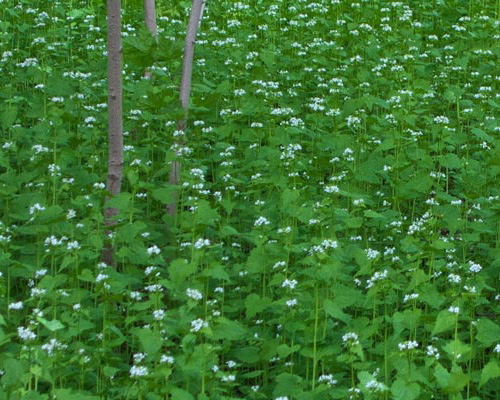Management Programs
Invasive species are taking a toll on our native, historical landscapes. These species were typically brought over by European Colonies when first coming to the United States. They have adapted to our climate and are now overly aggressive, out-competing many of the plants that make for a biodiverse ecosystem. At Eco Harmony, we are committed to helping homeowners take back the natural landscape and eliminate the invasive species that have overwhelmed our native Wisconsin landscape with our invasive plant control services. We offer management programs to eliminate invasives, including two major Wisconsin players – Buckthorn & Garlic Mustard.




